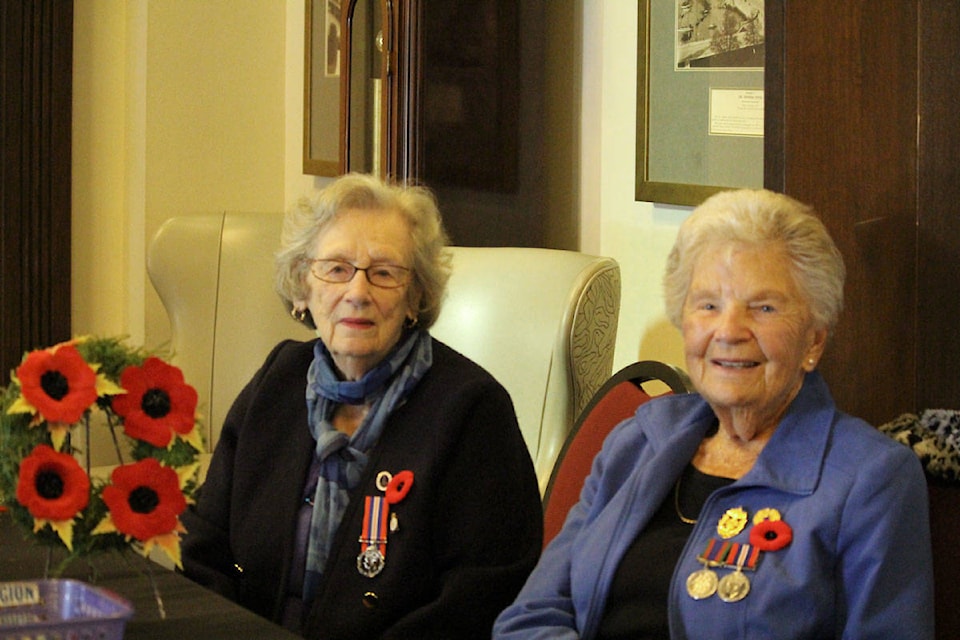Sitting at the Fairmont Empress hotel in Victoria and handing out poppies ahead of Remembrance Day, Alice “Ruddy” Adams (born Rutherford), wore a Bletchley Park Commemorative Badge and chatted with dear friend Lilian Phibbs – wearing her badge as well.
If you were to ask Adams about her service in the Second World War today, she may brush it off, divert you to her friend or tell you there’s not much more she can add to stories that have been written about her.
Adams one of about 50,000 Canadian women who served the country in uniform, contributing to Allied victory and blazing trails in highly technical and advance roles.
In 1942, as the Second World War intensified and more men were needed in the Canadian navy, the Women’s Royal Canadian Naval Service was created to let women volunteer for service. The elementary teacher from Saskatchewan was among the women who volunteered.
At the start of the war, Adams found a recruitment notice and travelled to Saskatoon to enlist at HMCS Unicorn, a naval reserve division of the Royal Canadian Navy. She then travelled to Galt, Ont. for basic training at HMCS Conestoga.
After completing basic training and being selected to be among the first group of wireless telegraphists, Adams went to signal school and learned to be proficient in Morse code. She was then sent to Ottawa to help establish Number 1 Station HMCS Bytown, a station that intercepted German naval communications and where Wrens – members of the Women’s Royal Naval Service – were at the core.
Adams was then posted to HMCS Coverdale in Moncton, N.B. where she copied enemy naval traffic and tracked the bearings of enemy German submarines known as U-boats. Intelligence gathered from stations like the one where Adams worked helped the Allies locate U-boats and divert merchant convoys in the Atlantic Ocean.
After Japan entered the war, the Pacific Ocean also became significant and while Adams hoped to be posted overseas, she found herself at signal school again to learn Kana, the Japanese version of Morse code. She was then posted to the Gordon Head Special Wireless Transmitting Station on Vancouver Island in 1944. Today, the former grounds of the station form part of the University of Victoria campus.
Canadian posts like these were considered to be outstations of Bletchley Park, the top-secret British military intelligence headquarters located in the United Kingdom. Since the nature of the work Adams was involved in was covert, it wasn’t until decades later that her role in the larger system would become apparent to her. Adams later earned the Bletchley Park Commemorative Badge.
Adams ended up achieving the rank of Petty Officer and concluded her wartime service in 1946. She then finished schooling and became a reference librarian. Adams married, moved to Ottawa and returned to Victoria after her retirement in 1985 where she lives to this day.
“The story of the German and Japanese codes has now passed into history,” Adams said at a ceremony that honoured her in May at Fort Rodd Hill. “I am proud to be part of this story and to have served with so many young women who became friends for life. I am honoured to represent them here today.”
Now, Adams and Phibbs – who reconnected after the ceremony at Fort Rodd Hill – talk fondly of their memories and about a book that Phibbs wrote about being a Wren called Memory Lane: A Love Story. They hope proceeds from the book, which can be purchased at Bolen Books, Tanner’s Books and on Amazon, will go to Cockrell House in Colwood, a place that provides safe transitional housing and services to homeless veterans.
shalu.meht@goldstreamgazette.com
